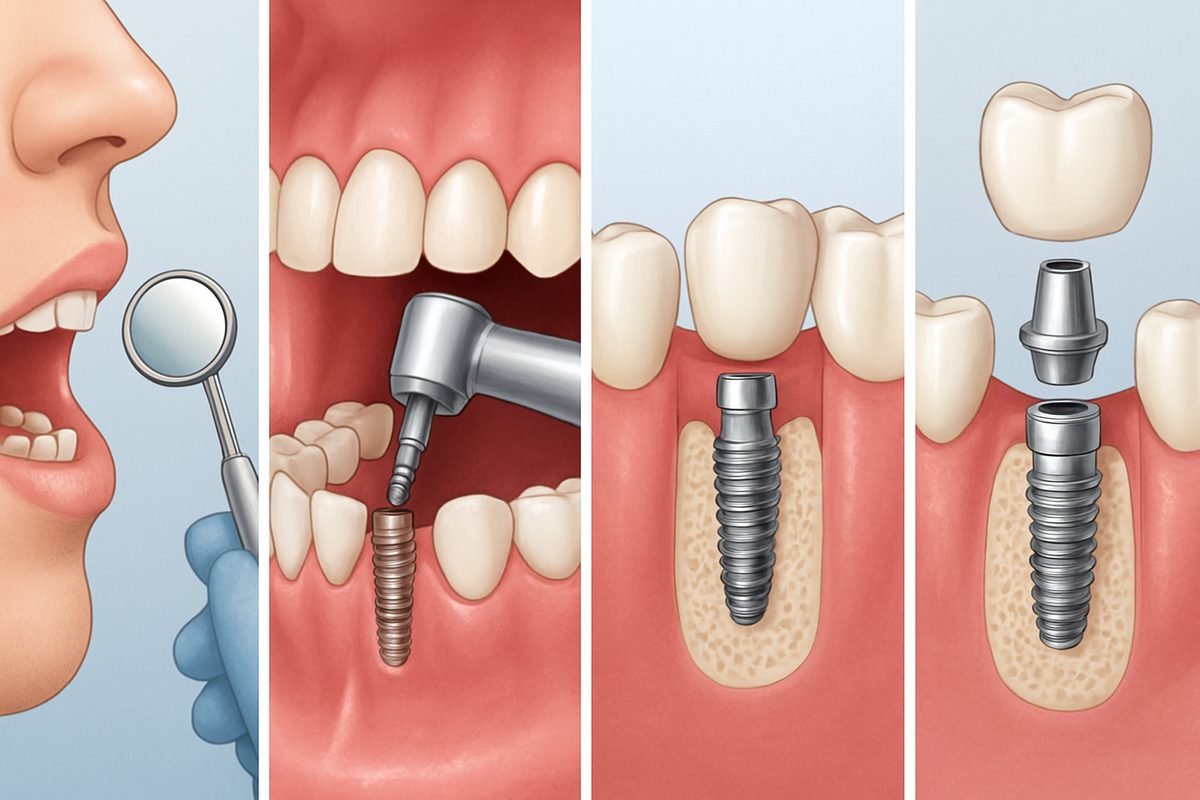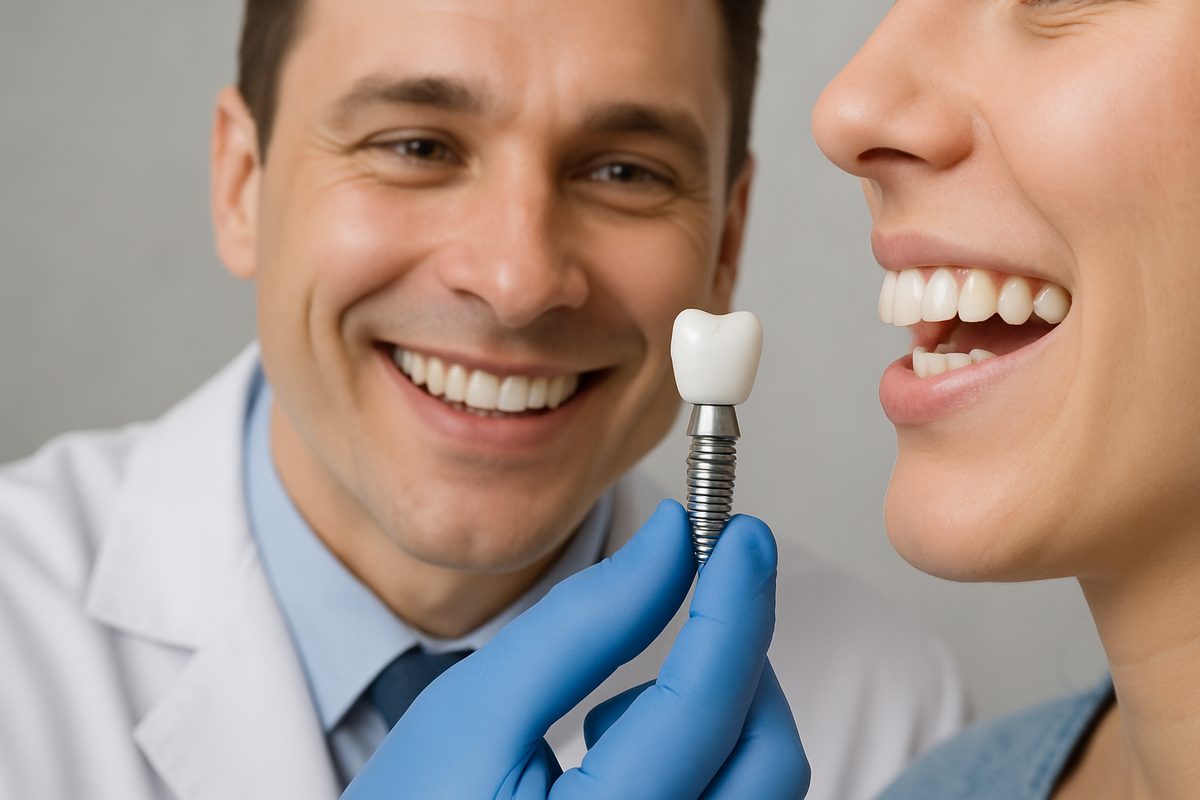blog - [City], [state]
Tips, Facts, And The
Latest In Dentistry

How Are Dental Implants Done? Your 2024 Guide By University Park
Posted in Dental Implants

Intro: Want a quick, clear answer to “how are dental implants done”? This concise 2024 guide by University Park explains the process in plain terms. Dental implants replace missing teeth with a titanium root and a custom crown. Below you’ll find the main stages, who makes a good candidate, special cases, recovery expectations, risks, and how Speranza Dental Implant Centers coordinates care if you want a personalized plan.
Quick answer: how are dental implants done
Dental implants are done in four main stages: exam and digital planning, implant surgery, healing (osseointegration), and final restoration. First, your team uses scans and models to plan the exact position. Next, the surgeon places a titanium post into the jaw. Over weeks to months the bone bonds to the implant. Finally, a prosthodontist attaches an abutment and a crown, bridge, or full-arch prosthesis.
How are dental implants done by University Park — step‑by‑step
1. Initial exam and digital planning
Your visit starts with a clinical exam, impressions or scans, and a CBCT 3D image. A fully digital workflow maps bone, nerves, and tooth position so the team can choose implant size and angle for the best long-term result.
2. Surgery: placing the implant
Implant surgery is done under local anesthesia or IV sedation if you prefer. The oral surgeon makes a small opening in the gum and places the titanium implant into the bone. Some cases use immediate placement after extraction; others wait until the site heals first.
3. Healing and bone integration
Osseointegration is when the bone grows tightly around the implant. This usually takes 3–6 months depending on health and bone quality. Normal recovery includes mild swelling and soreness that improve in a few days. Your team will check healing during follow-up visits.
4. Abutment and final restoration
After the implant is stable, an abutment (connector) is attached. A lab-made crown, bridge, or full-arch prosthesis is then fitted and adjusted for bite and aesthetics. Final teeth look and function like natural teeth.
Special cases: full‑arch restorations and advanced techniques
Full‑mouth restorations may use 4–6 implants per arch or specialized options like zygomatic implants for severe bone loss. Bone grafting or sinus lifts add steps and healing time but allow implant placement when bone is thin.
Who is a good candidate?
Good candidates have enough bone, controlled medical conditions, and healthy gums. Smoking, uncontrolled diabetes, or severe bone loss require planning or treatment first. Adults who want fixed, long-term tooth replacement are the typical candidates.
Recovery timeline and what to expect
Expect 1–2 weeks of soft-food diet, limited activity, and follow-up checks. Pain and swelling peak in 48–72 hours and then improve. Most people can use temporary teeth soon and get final restorations after osseointegration is confirmed.
Risks, success rates, and long‑term care
Implants have high success rates (often 95%+). Risks include infection, implant failure, and nerve or sinus issues. Good oral hygiene, quitting smoking, and regular dental visits greatly improve outcomes and implant longevity.
Why choose a combined prosthodontist + oral surgeon team late in the process
A coordinated team improves predictability: the oral surgeon manages placement while the prosthodontist plans the final tooth form. Speranza Dental Implant Centers in University Park uses a fully digital workflow and an on‑site lab for faster, precise restorations and smoother communication between specialists.
Next steps: financing, scheduling, and getting your questions answered
If you’re still asking “how are dental implants done by University Park” and want a personalized plan, Speranza offers consultations, financing options, and flexible scheduling. Book a consult to review scans, costs, and a timeline tailored to your needs.





